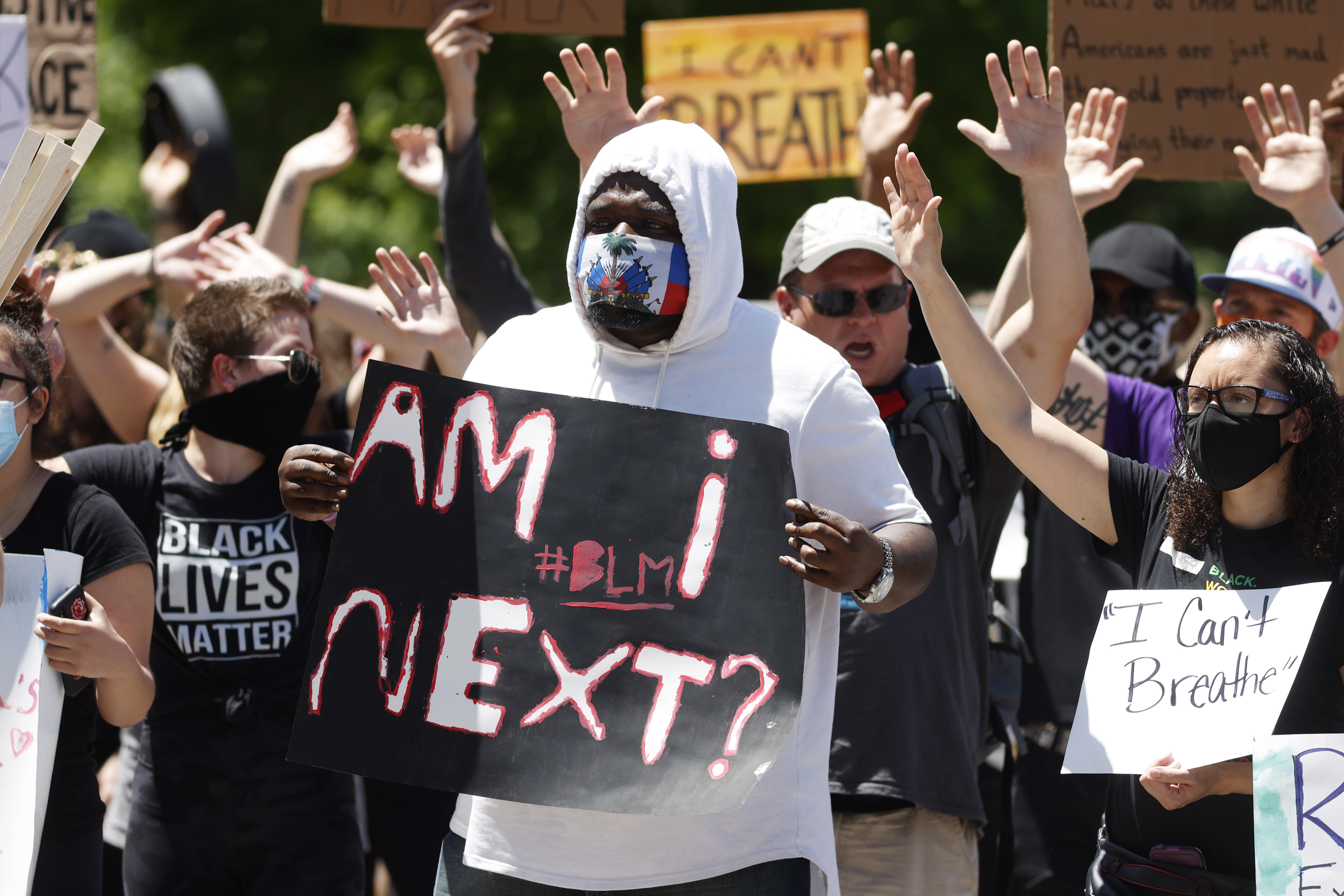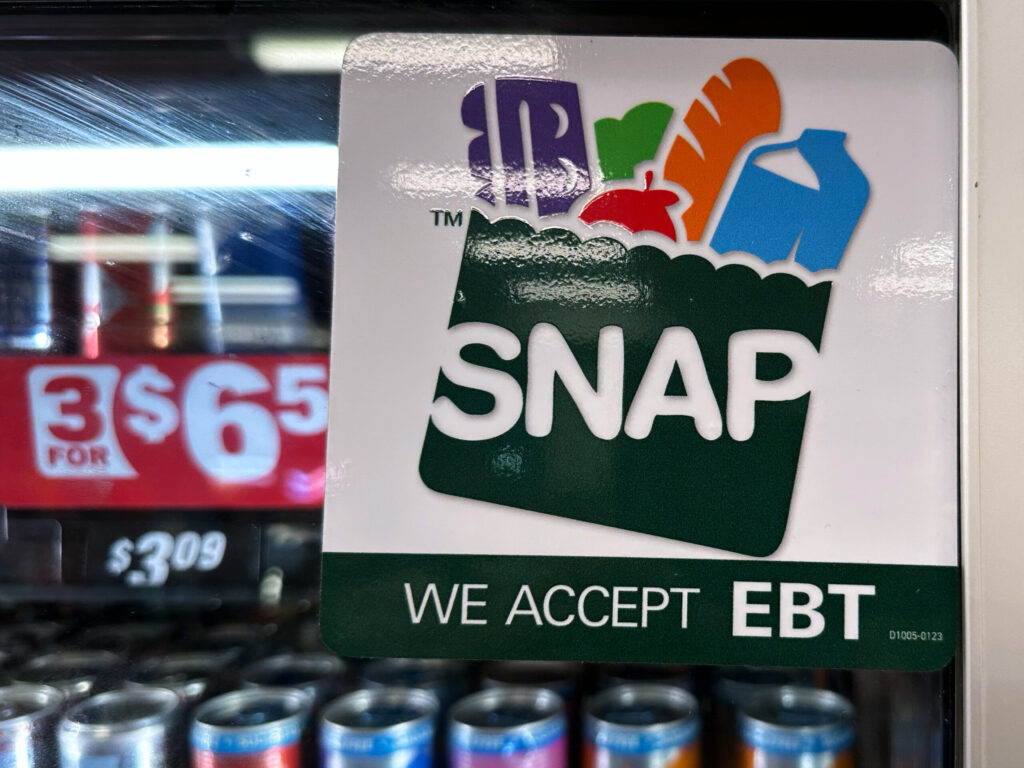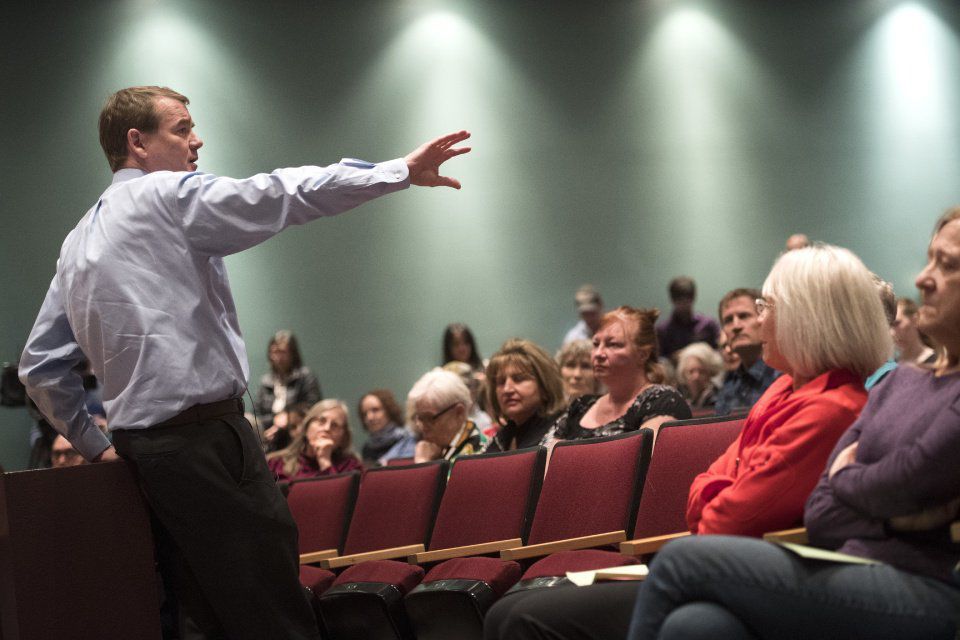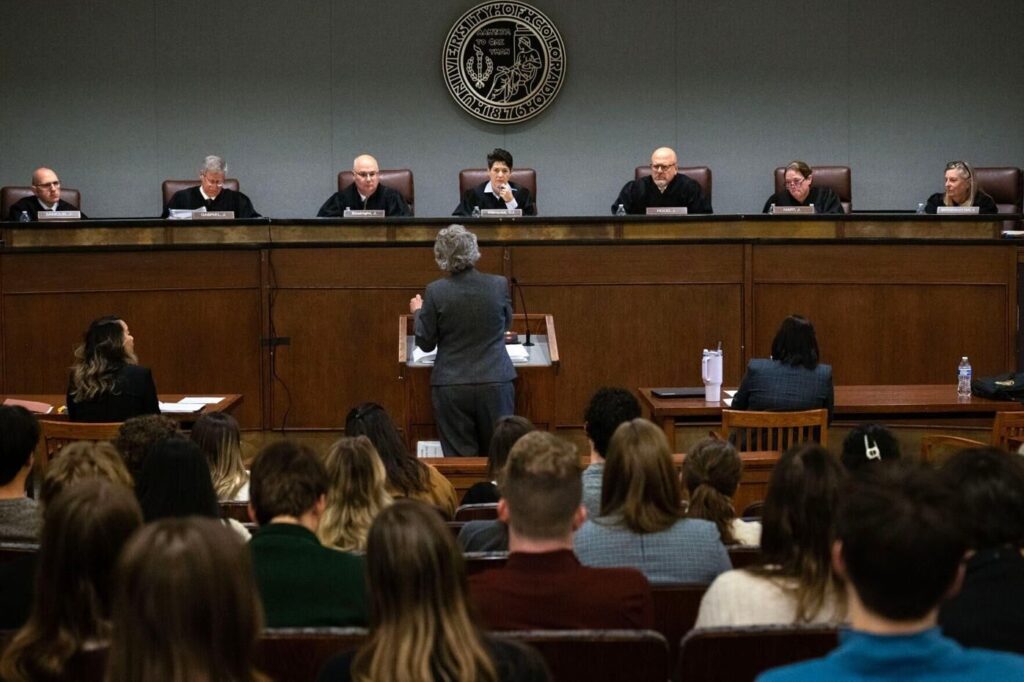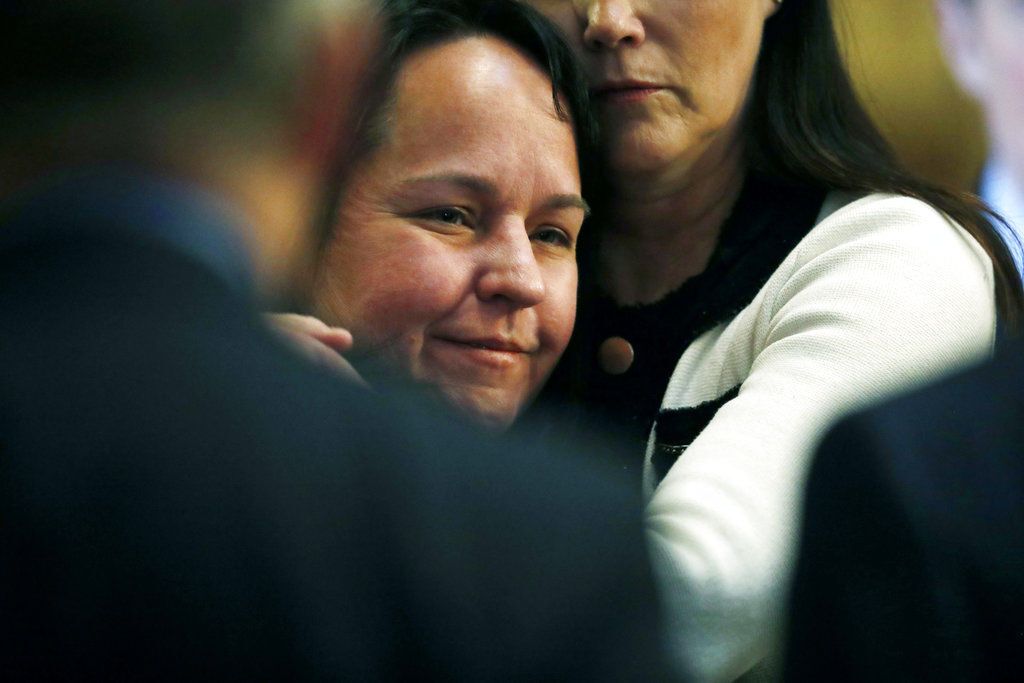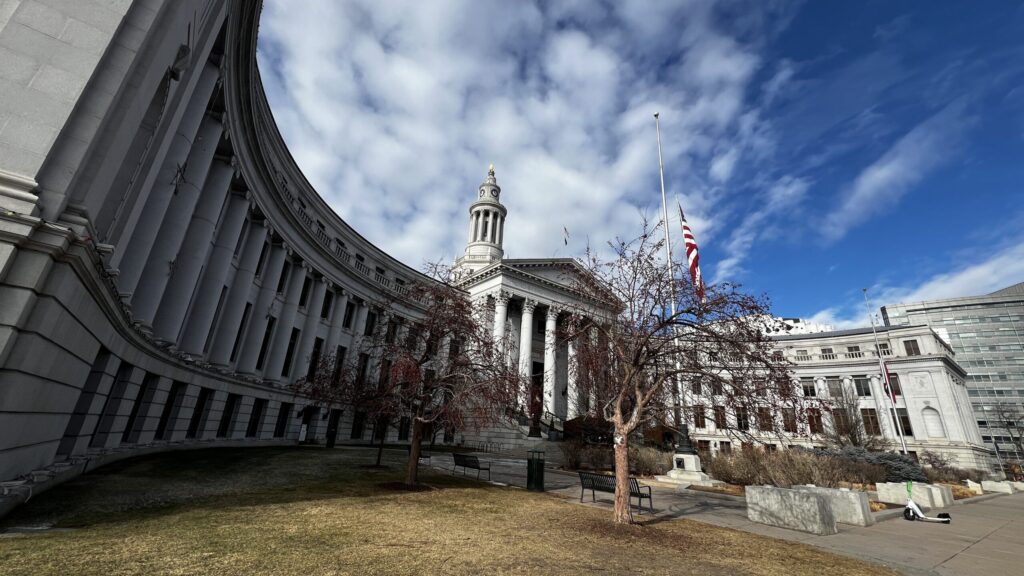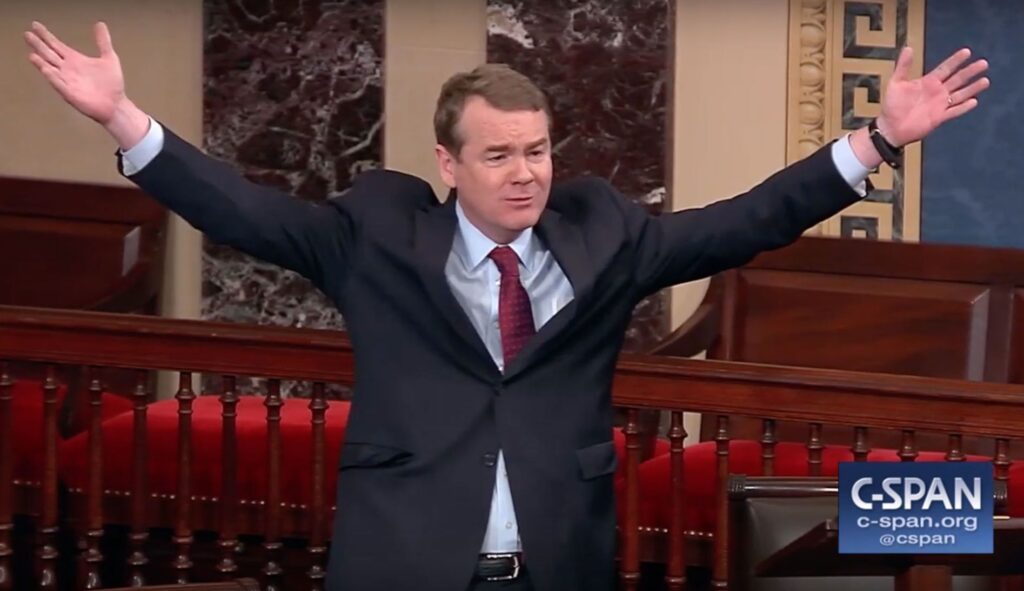Response to George Floyd protests drew criticism from some in Denver police’s leadership ranks, former monitor says
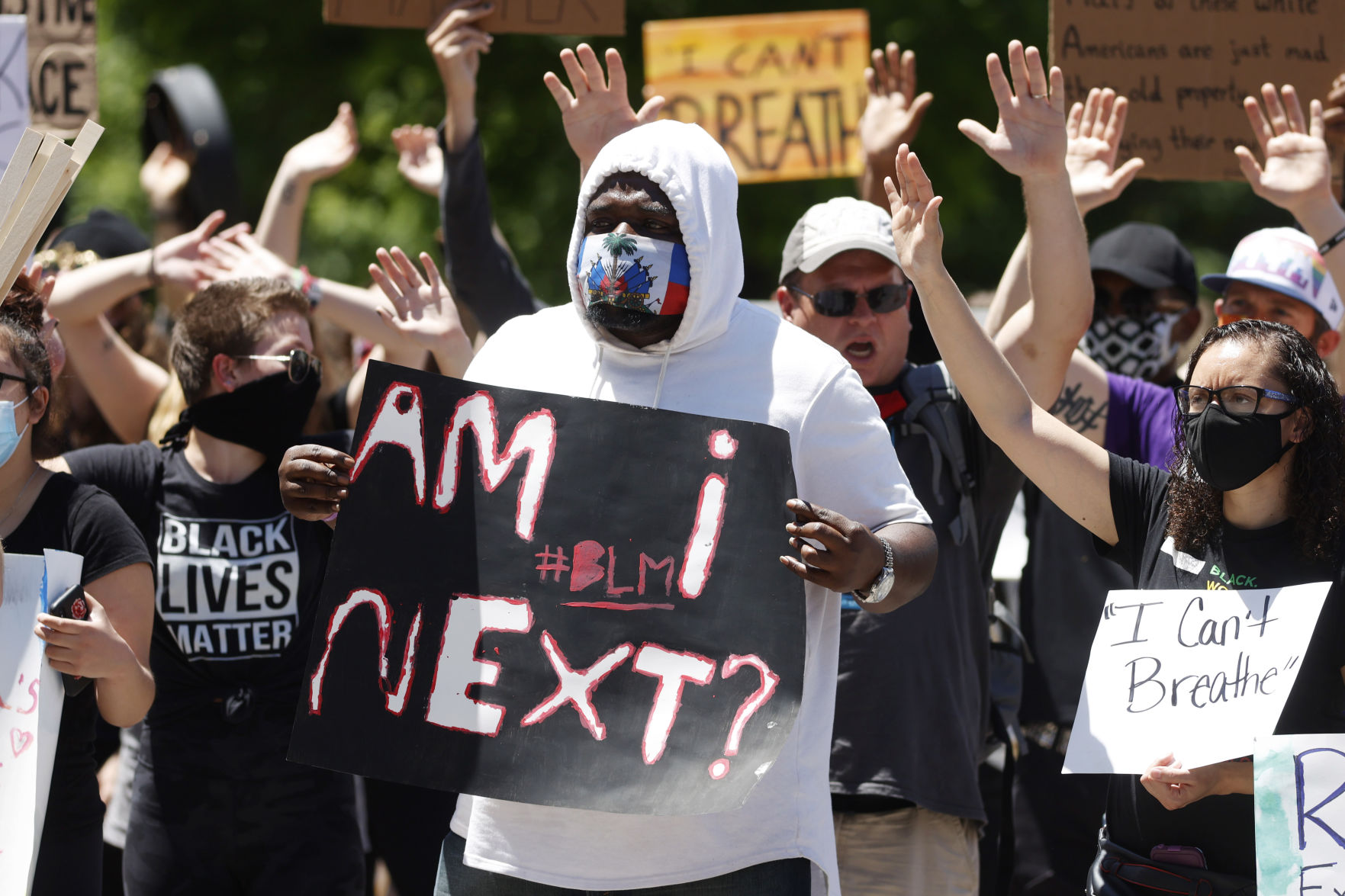
Officers in the Denver Police Department’s leadership overseeing the response to the 2020 George Floyd protests criticized how officers on the ground were using less-lethal weapons for crowd control and said there was a lack of communication between the command post and officers about tactical strategies.
And they worried the long hours officers were working on the front lines without breaks was increasing the chances of them lashing out against protesters.
This was according to Nick Mitchell, Denver’s former police monitor, in testimony Thursday in the ongoing federal trial over Denver police’s handling of the racial justice protests two years ago in response to the death of George Floyd in Minneapolis.
The federal excessive force lawsuit claims Denver failed to train officers for responding to the protests, leading to what the protesters say were dangerous and indiscriminate use of less-lethal munitions to control crowds.
“It’s important for police leaders to recognize the risk that officers may be provoked, may be emotionally challenged, can be traumatic for some officers to be in that circumstance when they’re being confronted with anti-police messages,” Mitchell said.
Denver’s Office of the Independent Monitor, the city’s police watchdog agency that Mitchell headed until January 2021, released a report in fall 2020 calling the police department’s use of less-lethal munitions throughout the protests “extremely troubling.”
The characterization “less lethal” to describe kinetic weapons that fire projectiles has been criticized because the munitions can cause serious injury or death.
The report found police used force against people who were not showing physical aggression toward officers, fired munitions at people’s heads, faces and groins, and continued deploying chemical agents after crowds dispersed. It also found officers often didn’t prepare use-of-force reports until days or weeks after the fact.
The police department’s leadership has said the unpredictability with which the protests erupted gave them little time to prepare for responding, and violence and property destruction by some made it difficult for them to distinguish them from people protesting peacefully.
Jury hears from former officer Monday in federal trial over Denver’s policing of 2020 protests
Among the critics of how the protests were managed was Capt. Sylvia Sich, who worked in the command post during some days of the demonstrations, according to Mitchell.
“You remember Capt. Sich relaying to you and your staff that in the command post, criticism of officers on the ground was nonstop. And that people outwardly wondered why lines weren’t moving, or why they weren’t disciplined and [Sich] kept thinking, what are they supposed to do without training or supervision?” asked attorney Tim Macdonald, a partner at Arnold & Porter representing several protesters.
Mitchell said DPD leaders in the command post described the environment as “chaotic” and “rudderless,” and officers on the ground didn’t have a clear sense of their tactical objectives for engaging with protesters.
As Sich rose in the police department’s ranks, Macdonald said, she raised questions about why the department took a reactive approach to problems and was met with “the attitude that ‘it’s not a problem until it becomes a problem, and it will be addressed once it is a problem.'”
“That’s how she presented it, yes,” Mitchell replied.
Mitchell’s report took a bird’s-eye look at the protest response and didn’t look at any specific use of force incidents, which is the responsibility of the police department’s internal affairs bureau. The OIM flagged 24 particular incidents for internal affairs to investigate.
But Lt. Ken Chavez, now retired from the department, has come up as one of the specific officers accused of using excessive force. Two of the protesters bringing the lawsuit have accused him of targeting them with chemical weapons while they were on their front porch.
Division Chief Aaron Sanchez, who at the time of the protests was the commander of DPD’s District 6, said last week he believes he should have done more to follow up on word he received of a report made by an anonymous sergeant about concerns that Chavez was ordering him and other officers to use less-lethal weapons in ways that the situation didn’t warrant.
Sanchez said the orders at the time were for officers to not use chemical weapons as a first tactic for getting compliance from protesters. When he first got the call about Chavez’ behavior, he thought it was “outlandish” because he didn’t think Chavez as a military veteran and longtime Denver officer would go against orders.
Sanchez said he told Chavez to stop giving any such orders if he had and contacted Patrol Division Chief Ron Thomas, but otherwise didn’t attempt to corroborate the report.
But Chavez was also among the officers who said there was a lack of communication and direction the command post, Macdonald said, and some lower-level department leaders didn’t feel comfortable making tactical decisions themselves.
“But there was unfortunately, in [Chavez’] view, a lack of communication a direction from the command post, so sometimes it was necessary for supervisors to just make decisions and adjust strategy on the ground,” he said.
Mitchell acknowledged that the protests were unique because of their unpredictability as they unfolded, the number of injuries to protesters and police officers, the amount of property damage done and loss of trust in the police department that followed. More than 70 officers were injured and millions of dollars of damage was done to private, city and state property.
He also acknowledged that protesters causing destruction and harming officers mixed in with peaceful protesters presented a challenge for police in separating out those people behaving violently, something for which the police department has been criticized in their response.
“In 40 years, I’ve never seen such violence against police. I never saw such angry people – justified, possibly — but they were attacking officers,” said Patrick Phelan, who served as incident commander of the protests and is now retired from the department, in testimony earlier this week.
“I would not allow officers to stand static and be hit with rocks, bricks, objects thrown with larosse sticks. I won’t allow that to happen.”
Protesters take stand in first day of testimony in trial over police response to 2020 demonstrations
Mitchell’s investigation didn’t blame officers on the ground for what the OIM identified as failures in tactical strategies because he believed they didn’t have the experience to make those decisions themselves. Mitchell said he heard from officers and supervisors during the OIM’s investigation that those in the field needed to be rotated off of working the protests’ “skirmish” lines to get a mental break, because the protests directed at police meant officers took a lot of abuse. That brought the possibility the officers might react in retaliation if they worked the skirmish lines too long, they said.
Macdonald implied that Lt. John Coppedge, who works in the training academy, believed a failure to recognize the need for officers to be rotated out was one of the biggest shortcomings of supervision during the protests.
“There’s a risk that an officer will use force as punishment or retaliation for taking abuse or bad language, or having something thrown at them earlier in the day, right?” Macdonald asked.
“That’s correct,” Mitchell said.
The trial, scheduled for three weeks, will continue Friday morning.
The dozen protesters bringing the lawsuit include Elisabeth Epps, Amanda Blasingame, Zachary Packard, Claire Sannier, Hollis Lyman, Maya Rothlein, Stanford Smith, Ashlee Wedgeworth, Joe Deras, Sara Fitouri, Jackie Parkins and Elle Taylor.
